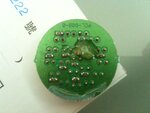weltenbummler
Newbie level 4

I was trying to convert this big old flashlight I found into a more mordern and powerful LED flashlight. I recently replaced the battery and since it can be charged by plugging it into a regular power outlet it is actually quite convenient and just needs an upgrade.
I figured it would be quite simple by ordering these LED light bulb replacements from ebay. It actually works quite well with the smaller 6-LED E10 light but it did not give me enough light. Therefore I bought a 16-LED E10 light from the same seller. It says on the light that it can be used with 6V-9V. Since the battery is 6V, I thought I should be good to go and it will produce as much light as possible.
I seem to be missing something here (most likely basic skills as an electrician) because the light the 16 LED E10 light gives me is considerably less than what the 6 LED E10 light produces. I guess I have to adjust some resistor on the circuit board.
Can someone help me identify the parts that need modification and point me to the right direction?
(I hope I posted this in the right category...)
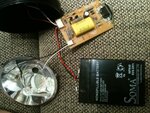
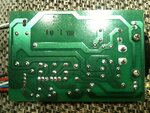
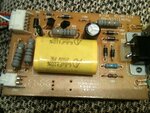
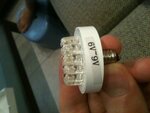
I figured it would be quite simple by ordering these LED light bulb replacements from ebay. It actually works quite well with the smaller 6-LED E10 light but it did not give me enough light. Therefore I bought a 16-LED E10 light from the same seller. It says on the light that it can be used with 6V-9V. Since the battery is 6V, I thought I should be good to go and it will produce as much light as possible.
I seem to be missing something here (most likely basic skills as an electrician) because the light the 16 LED E10 light gives me is considerably less than what the 6 LED E10 light produces. I guess I have to adjust some resistor on the circuit board.
Can someone help me identify the parts that need modification and point me to the right direction?
(I hope I posted this in the right category...)





